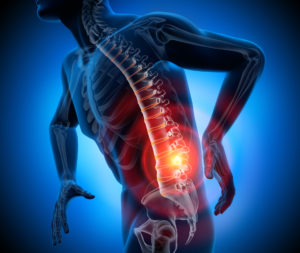Urinary Diversion in Chattanooga TN
What is Urinary Diversion?
Urinary Diversion is a surgical procedure where the flow of urine is diverted from its normal pathway because the bladder has been removed, or urine flow is obstructed. It can be temporary or permanent.
A permanent type of urinary diversion is where the urine flow is rerouted to an external pouch through an opening in the abdomen creating a stoma (an opening on the outside of the body) or by surgical creation of an internal reservoir. Temporary urinary diversion may be in the form of catheters placed within the bladder or kidney.

Schedule a Consultation Today!
Why is a Urinary Diversion Procedure Necessary?
When urine flow is blocked it accumulates in the urinary tract and can cause pain, urinary tract infections, kidney infections, and even death. Temporary diversion may be needed until a blockage is removed or after urinary tract surgery. Permanent diversion is necessary when the bladder is severely damaged, has been removed due to cancer, or when there is severe nerve damage, birth defects, or chronic inflammation.
Urinary diversion bypasses the removed or malfunctioning bladder by creating an opening in the urinary system to allow the urine to exit the body another way. This allows the patient to pass his or her urine normally, which is necessary for your health. These procedures allow the person to live normally and regain confidence in their ability to urinate when necessary. You can return to normal activities.
Types of Urinary Diversions
Continent Urinary Diversion:
Continent diversion allows a patient to urinate spontaneously without an appliance or collecting device. It is the surgical creation of an internal reservoir (under the skin) or construction of a replacement bladder. There are two types:
Continent Cutaneous Reservoir:
Continent cutaneous reservoir or Indiana Pouch (continent stoma) is a surgically constructed reservoir connected to a stoma (opening). The surgeon creates a valve to keep urine from flowing out of the stoma. Urine flows through the ureters and is drained by the patient, with a catheter, several times a day. The stoma is very small and can sometimes be hidden in the belly button. Continent Stomas require daily care to maintain a clean and healthy stoma. Home care is vital to your health. A specialist will train you in the proper maintenance program.
Neobladder:
The surgeon creates an internal reservoir that connects to the ureters at one end and the urethra at the other. Urine empties into the new reservoir just as the natural bladder did. Clean intermittent catheterization may be required to completely empty the reservoir. Women are more likely than men to do this at home. To be eligible for this surgery, the patient must be motivated to take care of the diversion, have intraoperative findings that are appropriate for neobladder creation, and be able and willing to use a catheter, if necessary.
Non-Continent Diversion:
It involves connecting the ureters to an opening on the outside of the body to allow urine to drain into an external pouch. The patient wears an ostomy bag and urine continuously drains into it. There are 2 types:
- Ileal Conduit – a section of the bowel is surgically removed and repositioned as the passage from the ureters to the stoma. This is the oldest and simplest form of urinary diversion.
- Colon Conduit – here a section of the colon is used when the use of the ileum is not appropriate.
A non-continent stoma requires daily care to maintain healthy skin in the area around the attached pouch.
What People Say About Us!
Dr Walker is great! Very nice bedside manner and always answers all our questions.
Click here to read more reviews.
Who is a candidate for urinary diversion?
Generally, these procedures are reserved for patients who have had radical cystectomy, removal of their bladder, due to bladder cancer or interstitial cystitis. For other patients, their bladder has been severely damaged by trauma or there can be nerve damage that impairs function. In some cases, there may be a blockage in the urinary system that may be able to be reversed, so the temporary diversion is necessary. Occasionally, a patient’s bladder simply begins to malfunction.

Urine is a waste product created by the kidneys and it must be passed from the body. If the normal process is blocked or not functioning, the patient risks developing kidney and urinary tract infections, and there is the possibility of death. A urinary diversion is necessary.
One thing that is necessary with any of these surgeries is the active involvement of the patient. Whether using a stoma and an outside bag or creating an Indiana Pouch of the neobladder, daily maintenance and the use of catheters will be a part of your life. Patients need to keep these materials clean in order to avoid the risks of infection.
What is recovery like after any of the urinary diversion surgeries?
As mentioned above, there are different options for these procedures. They are basically broken down into continent and non-contingent options. Non-continent diversion brings the urine out through the belly where it enters an ostomy bag outside the body. Continent diversion creates a pouch inside the belly to hold the urine.
After urinary reconstruction and diversion, it will be 1-2 months before you are healed and you regain your strength. Most people can return to work in the same period of time.
Otherwise, we encourage our urinary diversion patients to fully return to their normal lives. You should exercise and participate in sports; there aren’t any restrictions on travel, and you have no dietary restrictions.
How long does a urinary diversion procedure take?
These procedures take between 3 and 6 hours. Ileal conduit surgery is simpler than some of the other options, so it generally will require a shorter time in surgery.
Are There Risks Associated with Urinary Diversion Surgery?
Alterations in fluid or salt balance, metabolic changes, difficulties inserting the tube in the stoma, skin growth over the surgical opening; bowel obstruction, urine leakage, and bowel leakage are all possible and will be reviewed by your urologist at length. Generally, these surgeries are well tolerated and most patients can be rehabilitated to normal activity and a normal lifestyle.
Urinary diversion surgery requires highly qualified surgeons who perform this procedure regularly like the experts at UT Urology. Our surgeons are sensitive to your needs and will balance your health needs with quality of life and independence considerations. We offer the latest cutting-edge techniques to meet your individual needs.
Signs of Infection
No matter the surgical method is chosen, there is a high risk of infection because bacteria often enter urostomies and continent urinary diversions. Signs of infection include:
- Fever
- Milky urine or mucus in the urine
- Strong urine odor
- Back pain
- Poor appetite
- Nausea
- Vomiting

If you have any of these symptoms, contact your doctor immediately. Drinking lots of water can prevent infection by flushing out bacteria. Urine testing and infection treatment are critical.
Is a urinary diversion procedure covered by insurance?
Yes. These are not optional procedures. They are usually necessary after a person has had bladder cancer or other reasons for having their bladder removed.
How much does a urinary diversion procedure cost?
Every patient’s situation is unique. That’s why there are now a variety of methods for performing urinary diversion surgery. While ileal conduit surgery is the most straightforward option, it may not be right for patients who do not want to have an external bag to gather their urine. Creating a neobladder that basically mimics your natural bladder could be the favored method, but it isn’t right for all patients.
Your costs also vary depending upon your insurance provider. During your consultations, once we have a better idea of your unique situation, your coverage, and other variables, we should be able to give you a good idea of the costs you will be responsible for.
Schedule Your Appointment Today
To learn more about urinary diversion or to schedule an appointment call our office or fill out our contact form and we will reach out to you as soon as possible.

